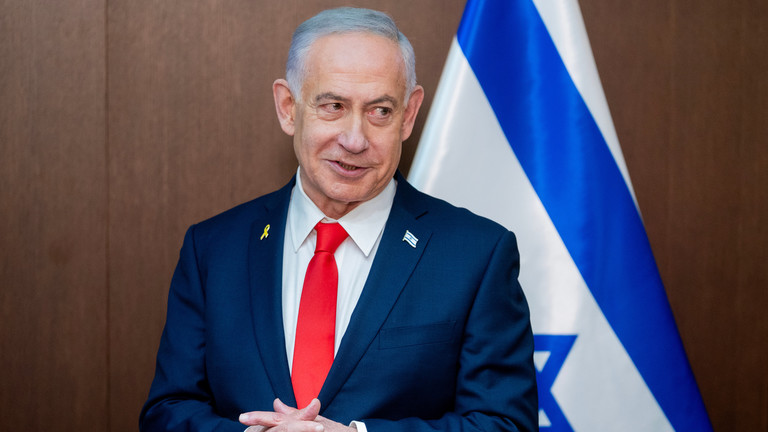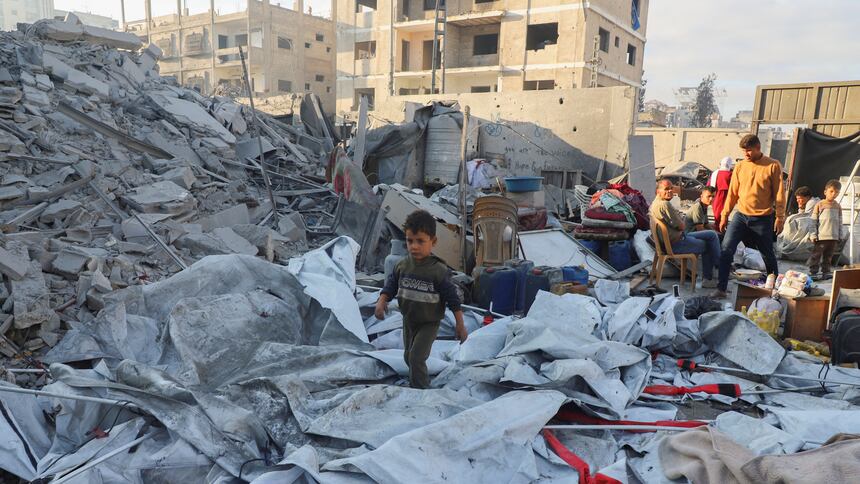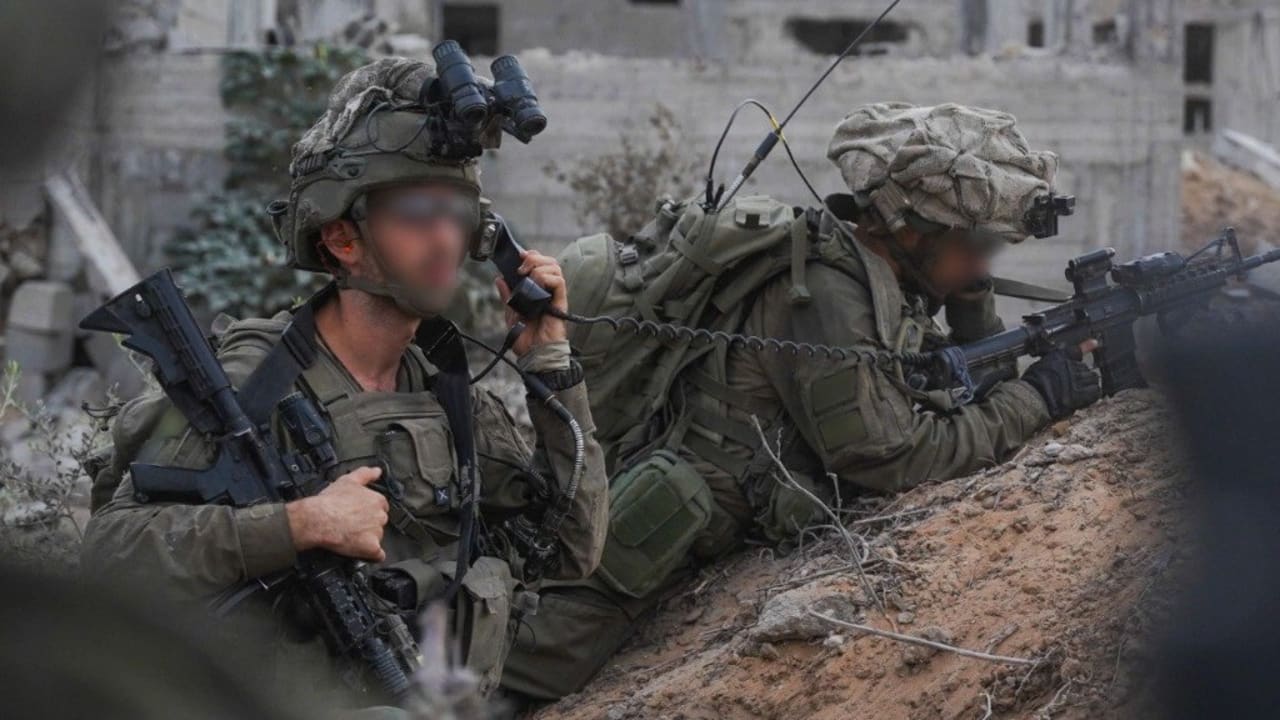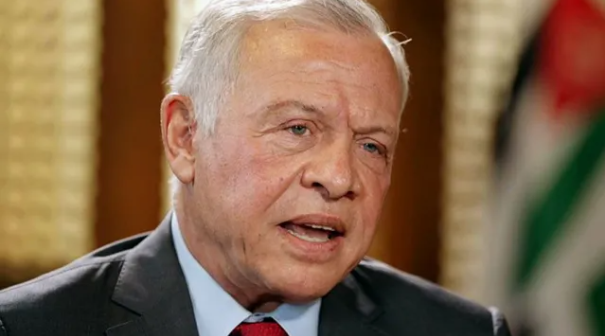
This article is more than
2 year oldIsrael and Hamas continue to battle, with at least 1,000 dead and warnings of a long war
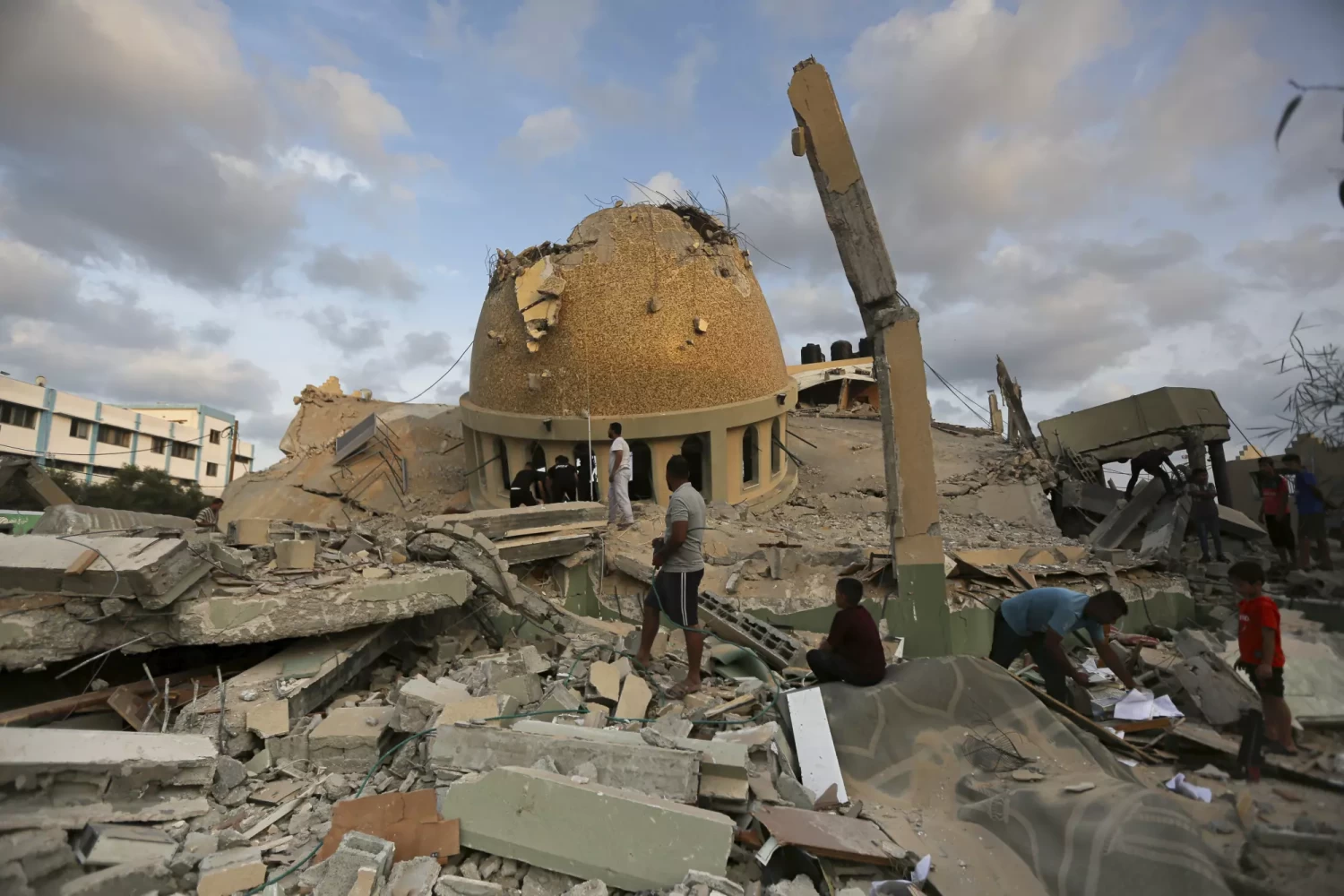
As the violence around Gaza raged, and more than 1,000 people were reported dead, the Israeli government formally declared war on Sunday and Prime Minister Benjamin Netanyahu warned of a protracted conflict. Concerns also grew of the possibility of a wider regional conflagration after Hezbollah, the Lebanese Shiite militant group and political party, said in a statement Sunday that it had launched artillery and guided rockets on three posts on the Israeli-occupied Shebaa Farms in southern Lebanon “in solidarity” with the Palestinian people. The attacks were intended to “liberate what remains of our occupied land,” Hezbollah said, adding that an Israeli drone destroyed a Hezbollah tent in the area.
Israeli forces said in a statement on the messaging app Telegram that their retaliatory bombing campaign had hit 10 Hamas targets in multistory buildings in Gaza, including the group’s intelligence headquarters and a military compound, as well as a weapons production site and an arms storage area belonging to the Islamic Jihad militant group.
Elsewhere, Israel said its naval forces had repelled an attack from Hamas fighters hidden in a beach area about 1½ miles northeast of Gaza’s border.

(Fatima Shbair / Associated Press)
The fighting came on the second day of all-out hostilities between Israel and Hamas, which launched a stunning cross-border incursion Saturday that caught Israel off guard and had its forces scrambling to beat back attackers on multiple fronts. As many as 1,000 Hamas fighters were involved in the assault, U.S. Secretary of State Antony J. Blinken said on ABC’s “This Week” — a high figure that underscored the extent of planning by the militant group.
Netanyahu grimly told his compatriots that their country was “at war” and on Sunday, Israel’s Security Cabinet issued a formal declaration.
At least 1,000 people on both sides have been killed so far, authorities said.
Local health officials in Gaza said Sunday morning that 320 people in the enclave had died, with 1,990 others wounded. Israeli media cited the country’s rescue services as saying that at least 700 Israelis had been killed, including 44 soldiers, along with some 2,000 wounded.
More than 100 Israelis had been kidnapped and were being held in Gaza, according to the Israeli Government Press Office, which as yet has not given an exact figure. The situation will greatly complicate Israel’s strategy during and after the fighting.
Abu Ubaida, military spokesman for the Qassam Brigades, Hamas’ military wing, taunted Netanyahu in a statement Sunday, saying Israeli forces “fell like grasshoppers by the hundreds.”
“Threatening Gaza and its resistance and its people is a losing game and a broken record,” Ubaida said.
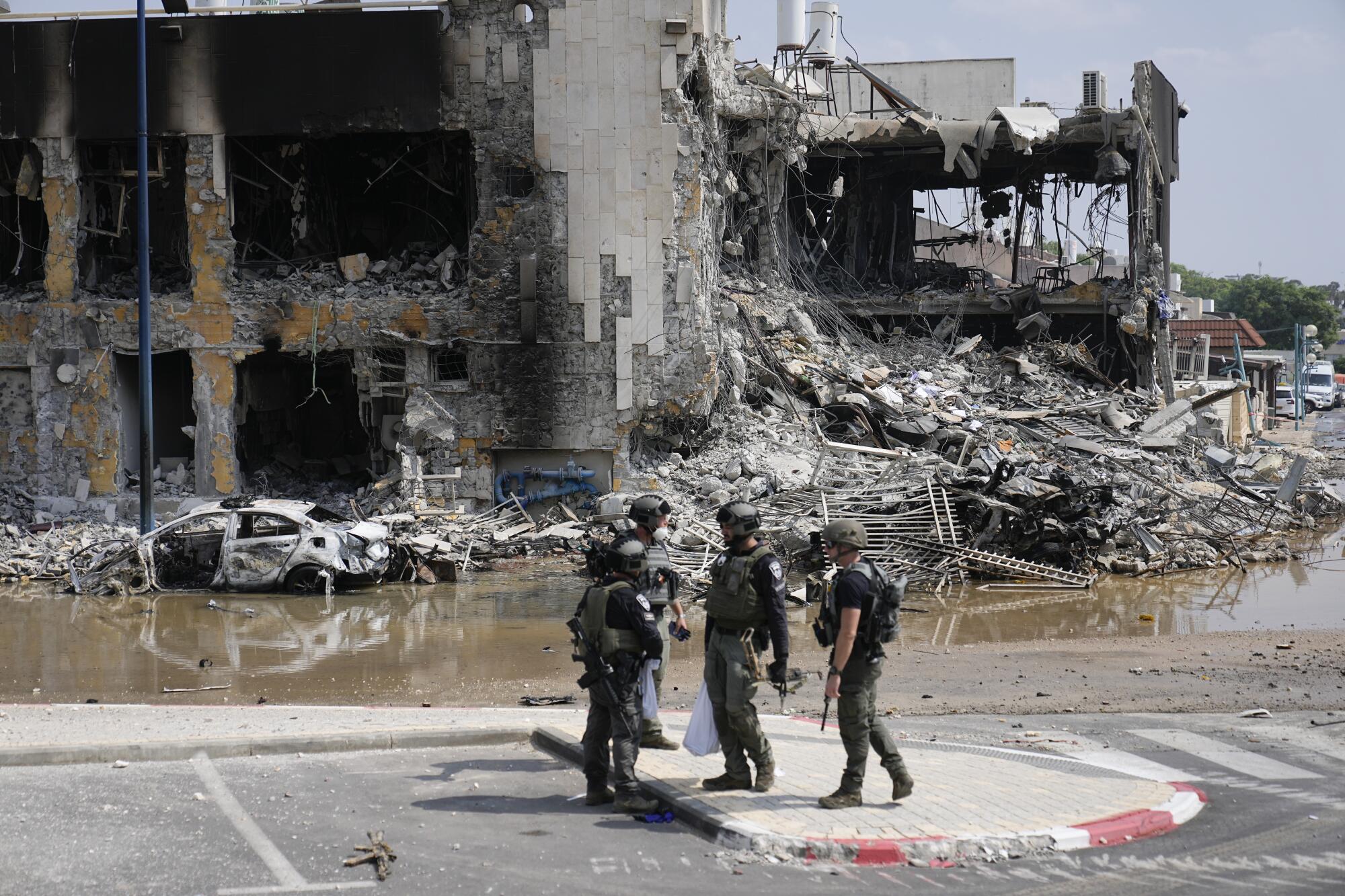
(Ohad Zwigenberg / Associated Press)
In Lebanon, United Nations peacekeeping forces in the south, known as UNIFIL, said that they remained in position and were in contact with both Israel and Hezbollah “to contain the situation and avoid a more serious escalation.”
“We urge everyone to exercise restraint and make use of UNIFIL’s liaison and coordination mechanisms to de-escalate to prevent a fast deterioration of the security situation,” the group said.
The Lebanese Army said Sunday that it had deployed near the border with Israel, was running patrols and was “closely coordinating” with U.N. forces.
In Gaza, whose electricity supply has now been cut off by Israel, Mohammad Essi said he escaped with his family from a residential tower near the Islamic National Bank, one of the buildings targeted early Sunday morning.
“The army called my neighbor and said we have to leave our homes,” said Essi, 31. Soon afterward, a powerful strike hit the bank building, destroying many buildings nearby.
“People were running out into the streets to escape,” he said.
By late morning, bulldozers and onlookers were working to clear the rubble. “No one was killed, but the area is shattered,” Essi said.
Groups of residents, fearing an Israeli land invasion, were leaving areas close to the northern borders of the Gaza Strip and heading toward Gaza City. Gaza residents reported receiving messages on their mobile phones Sunday telling them to leave their homes and head to “known shelters.” The message added to fears of a forthcoming land incursion.
Some 74,000 displaced Gazans were staying in 64 shelters, with the number expected to increase. The U.N. agency for Palestinian refugees, UNWRA, said a school sheltering more than 225 people took a direct hit. It did not say where the fire came from.
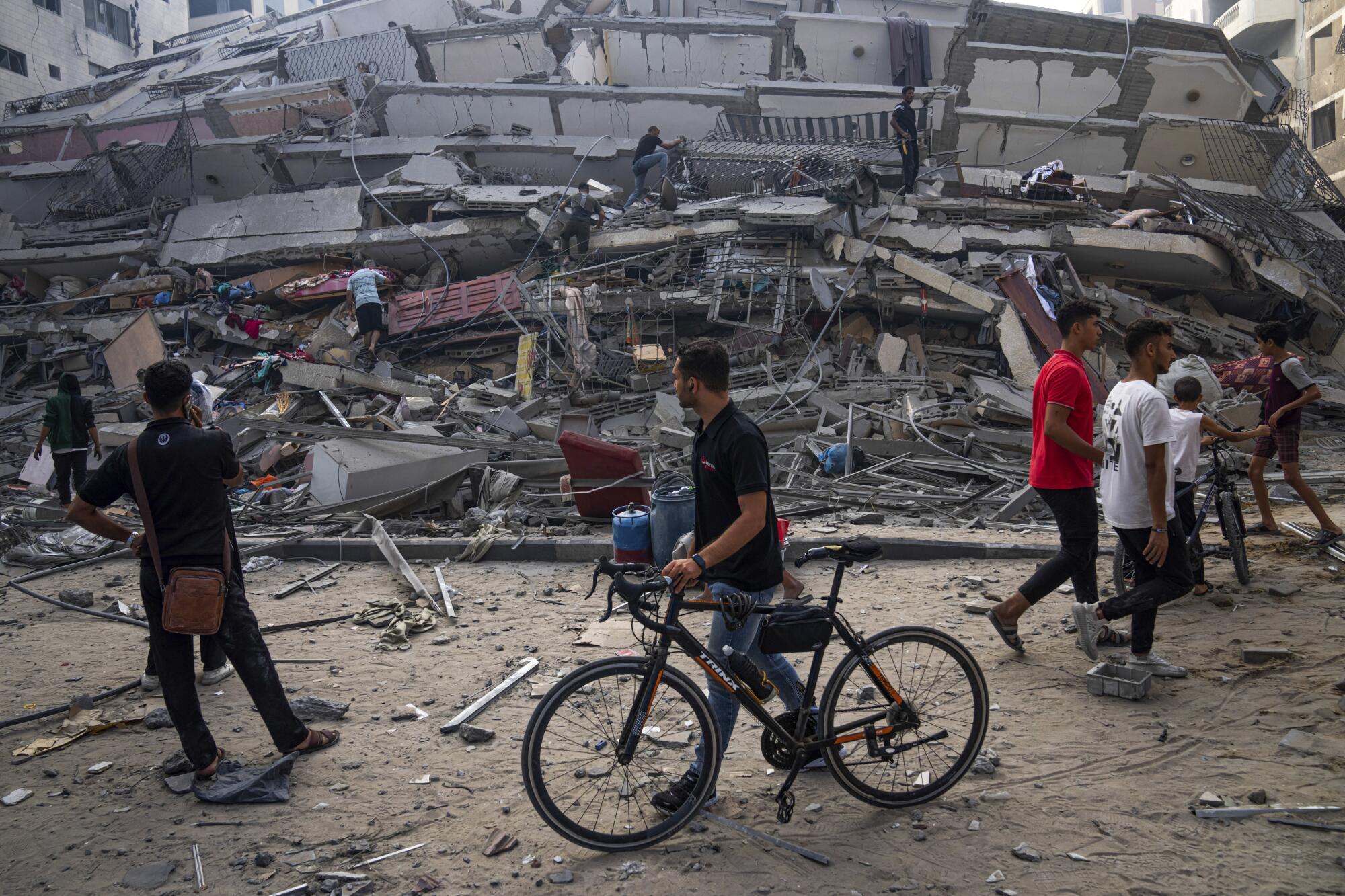
(Fatima Shbair / Associated Press)
The scale and tactics of Saturday’s incursion from Gaza, which saw Hamas fighters pour across the border by land, sea and air after a sustained rocket barrage, dumbfounded the Israeli government. Questions were immediately raised as to how the Israeli security establishment, with its vaunted network of informants and intelligence-gathering operations in the Palestinian territories, could have failed to detect plans of such a sophisticated attack on so many fronts.
The lapse was particularly embarrassing for Netanyahu, who has styled himself as a strong, security-minded leader and who has moved further right with tough-talking rhetoric against Palestinians to appease his ultranationalist governing partners. Israel’s longest-serving prime minister had also been working toward normalizing ties with Saudi Arabia after signing accords with other Arab states, such as Bahrain and the United Arab Emirates.
His vow to obliterate Hamas in Gaza, which will have the unavoidable effect of further immiserating the lives of the 2 million people crammed into the Mediterranean enclave, will complicate those diplomatic moves.
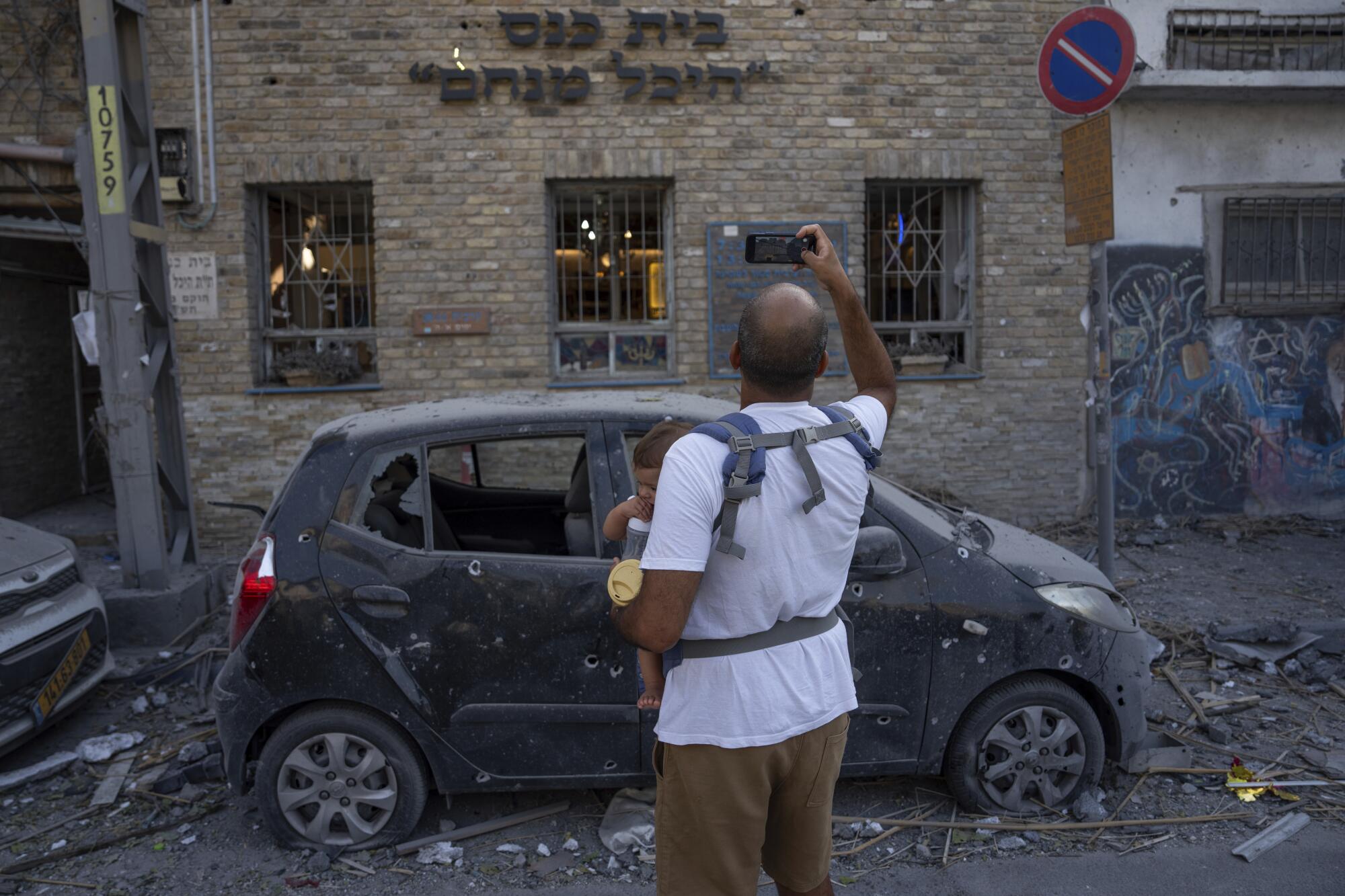
(Oded Balilty / Associated Press)
“All the places that Hamas hides in, operates in, we will turn them into ruins,” Netanyahu said Saturday. He warned Gaza’s residents to “get out of there now,” in advance of Israel’s retaliation, even though they effectively have no way to do so, since the territory has been under blockade by Israel and Egypt for years.
The Security Cabinet’s declaration of war was largely symbolic, said Yohanan Plesner, the head of the Israel Democracy Institute, a local think tank. But it “demonstrates that the government thinks we are entering a more lengthy, intense and significant period of war.”
Israel has carried out major military campaigns over the last four decades in Lebanon and Gaza that it portrayed as wars, but without a formal declaration.
The Security Cabinet also approved undefined “significant military steps.”
Israel hit more than 800 targets in Gaza so far, its military said, including airstrikes that leveled much of the town of Beit Hanoun in the enclave’s northeast corner.
Warplanes fired tons of explosives on 120 targets, Israeli Rear Adm. Daniel Hagari told reporters, saying Hamas was using the town as a staging ground for attacks. There was no immediate word on casualties, and most of the community’s population of tens of thousands of people likely fled before the bombardment.
“We will continue to attack in this way, with this force, continuously, on all gathering [places] and routes” used by Hamas, Hagari said.
President Biden has condemned Hamas’ assault, declaring that “the United States stands with Israel. We will not ever fail to have her back.” British Prime Minister Rishi Sunak also pledged “full solidarity” with Israel.
This is the second time that Israel and Hamas have engaged in full-scale hostilities in 2½ years. The last war — their fourth — lasted nearly two weeks in May 2021 before the two sides agreed to an internationally brokered cease-fire.
But rather than dissipating, the animating forces of that conflict have only persisted, with tensions at a constant simmer. Many Palestinians lambaste Israel for its tightened control over sites in Jerusalem that are holy to Muslims and Christians as well as to Jews, and have denounced the far-right government’s determination to build more Israeli settlements in the occupied West Bank, which they see as colonization and ethnic cleansing and which most of the international community considers illegal.
Constant military raids in the West Bank, which Israel says are necessary to thwart or punish deadly attacks on settlers and other Israelis, have resulted in the deaths of dozens of Palestinians. Although Israel says most of those killed have been militants, bystanders have also been among the casualties.
Last month, Save the Children said Israeli forces had killed at least 38 children since the beginning of 2023 until September, making it the deadliest year since records began; at least six Israeli children were also killed in the same time period, the group said.
“Enough is enough,” Mohammed Deif, the shadowy leader of Hamas’ military wing, said in a recorded message Saturday that urged Palestinians living in East Jerusalem and parts of Israel to join Hamas in its fight. He dubbed the incursion “Operation Al Aqsa Storm,” after the mosque on a hilltop compound in Jerusalem revered by both Muslims and Jews as a sacred site.
The sophisticated assault on Israel, when many residents were celebrating a normally joyous holiday, revived painful memories of the coordinated surprise attack by Egypt and Syria half a century ago, in 1973, when Israelis were observing Yom Kippur, the holiest day on the Jewish calendar. That conflict lasted for 20 days.
Bulos reported from Amman and Chu from London. The Associated Press also contributed to this report.

